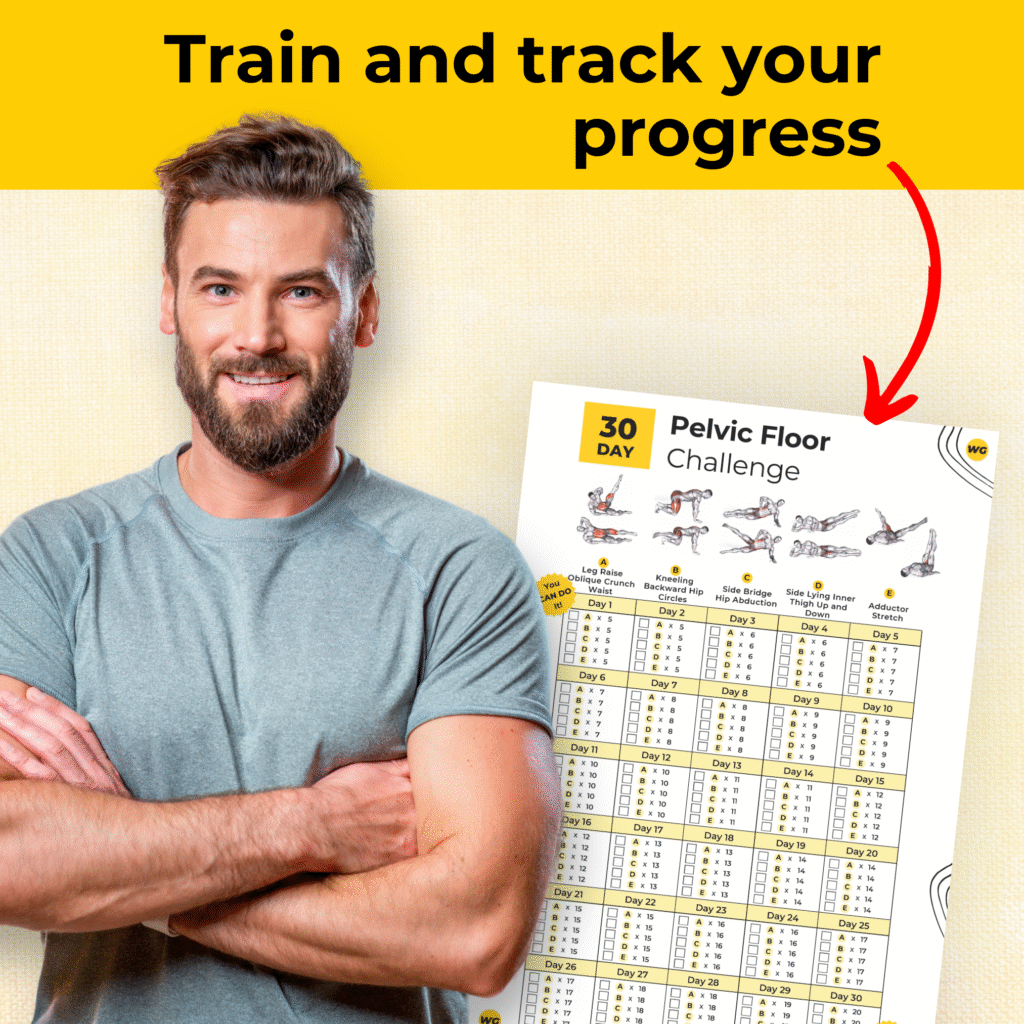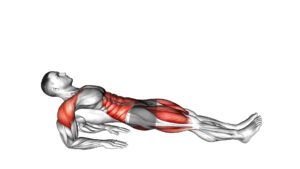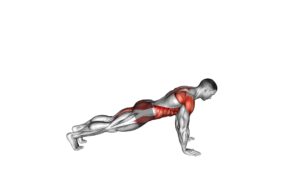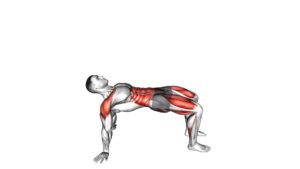Reverse Plank – Video Exercise Guide & Tips
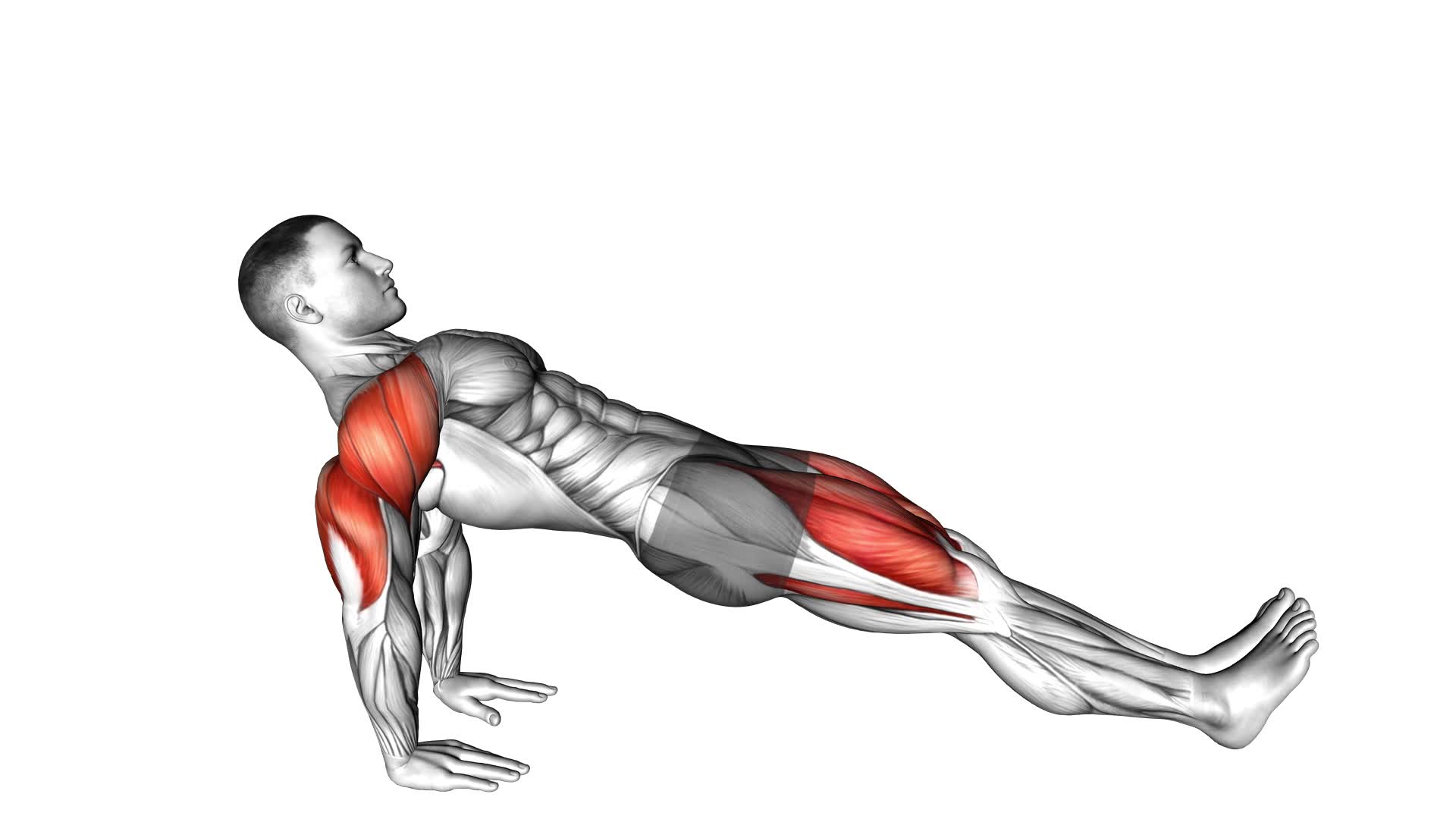
Are you looking to strengthen your core and improve your flexibility? Look no further than the reverse plank!
Watch This Exercise Video
In this video exercise guide, we'll show you the proper form and technique, as well as modifications for beginners and advanced variations to challenge yourself.
Avoid common mistakes and get the most out of your reverse plank with our expert tips.
Get ready to feel the burn and transform your fitness routine!
Key Takeaways
- Reverse plank targets core muscles, including abdominals, obliques, and lower back.
- It strengthens core muscles, improving stability and posture.
- Engages glutes, hamstrings, and shoulders for overall strength and mobility.
- Progression options include increasing duration and incorporating leg lifts or knee tucks.
Benefits of Reverse Plank
Discover the various benefits you can reap from incorporating the reverse plank into your fitness routine. This exercise primarily targets your core muscles, including your abdominals, obliques, and lower back. By performing the reverse plank, you can strengthen these muscles, improving your overall stability and posture.
In addition to targeting your core, the reverse plank also engages your glutes, hamstrings, and shoulders. This exercise helps tone and strengthen these muscle groups, enhancing your overall strength and mobility.
To progress in the reverse plank, you can start by holding the basic position for a shorter duration, gradually increasing the time as you build strength. You can also advance by incorporating leg lifts or knee tucks, which further challenge your core and leg muscles.
As with any exercise, it's essential to maintain proper form to maximize the benefits of the reverse plank. Make sure to keep your body in a straight line, engaging your core and squeezing your glutes. Avoid sagging or arching your back, as this can lead to strain or injury.
Incorporating the reverse plank into your fitness routine can provide numerous benefits, from strengthening your core muscles to improving your overall stability and posture. By progressing in this exercise, you can continually challenge yourself and achieve even greater results.
Proper Form and Technique
To perform the reverse plank with proper form and technique, you should ensure that your body maintains a straight line, engage your core and squeeze your glutes. Here are some tips to help you achieve the correct form:
- Start by sitting on the floor with your legs extended in front of you. Place your hands behind you, fingers pointing towards your feet.
- Press through your hands and lift your hips off the ground, while simultaneously extending your legs.
- Keep your body in a straight line from your head to your heels. Avoid sagging or arching your back.
- Engage your core muscles by drawing your belly button towards your spine. This will help to stabilize your body and prevent any excessive movement.
Maintaining proper form during the reverse plank is crucial for maximizing its benefits. By engaging your core muscles, you not only strengthen and tone your abdominal muscles but also improve flexibility in your spine. Squeezing your glutes helps to stabilize your pelvis and engage your lower body muscles.
Remember to breathe throughout the exercise and listen to your body. If you experience any discomfort or pain, modify the exercise or consult a fitness professional.
Modifications for Beginners
To modify the reverse plank for beginners, focus on building strength and stability in the core and glutes. This exercise can be challenging, but with the right modifications, you can gradually work your way up to the full pose.
One modification you can try is performing the reverse plank with bent knees. Start by sitting on the ground with your legs extended in front of you and your hands placed behind your hips, fingers pointing towards your feet. Bend your knees and place your feet flat on the ground, hip-width apart. Lift your hips off the ground while pressing through your hands and feet. Engage your core and squeeze your glutes to maintain stability.
Another modification is to use a prop, such as a yoga block or a step, to elevate your hands. This can reduce the strain on your wrists and make the exercise more accessible. Place the prop behind your hands and follow the same steps as the bent knee modification.
Remember to listen to your body and only go as far as you feel comfortable. As you continue to practice, your strength and stability will improve, and you can gradually progress to the full reverse plank.
Advanced Variations to Challenge Yourself
Ready to take your reverse plank to the next level? These advanced variations will push your limits and challenge your core strength even further.
Whether it's adding leg lifts, incorporating knee tucks, or attempting a one-arm reverse plank, these variations will help you level up your reverse plank and achieve new heights in your fitness journey.
Leveling up Reverse Plank
Challenge yourself with five advanced variations of the reverse plank. Take your reverse plank to the next level with these progression options that will challenge your muscles and increase muscle activation. Here are five advanced variations to try:
- Single Leg Reverse Plank: Lift one leg off the ground while holding the reverse plank position. This variation adds instability and requires greater core and glute strength.
- Reverse Plank with Leg Lift: Start in a regular reverse plank position and then lift one leg up towards the ceiling. This variation targets the glutes and hamstrings even more.
- Reverse Plank with Knee Tuck: While in the reverse plank position, bring your knees in towards your chest and then extend them back out. This variation engages the core and hip flexors.
- Reverse Plank with Arm Reach: Extend one arm forward while holding the reverse plank position. This variation challenges your shoulder stability and upper body strength.
- Reverse Plank with Leg Extension: From the reverse plank position, extend one leg straight out in front of you. This variation targets the core and hip flexors.
Try these advanced variations to take your reverse plank to the next level and challenge your muscles in new ways.
Pushing Your Limits
Take your reverse plank to the next level and challenge yourself with these advanced variations.
Overcoming obstacles and developing mental resilience are key components of pushing your limits in any exercise routine.
One advanced variation is the single leg reverse plank, where you lift one leg off the ground while maintaining the reverse plank position. This variation not only requires more core strength, but also challenges your balance and stability.
Another advanced variation is the reverse plank with leg lifts, where you lift one leg off the ground and raise it up towards the ceiling, alternating between legs. This variation not only targets your core and glutes, but also improves hip mobility and flexibility.
Remember to listen to your body and progress gradually to avoid injury while pushing your limits.
Common Mistakes to Avoid
To avoid common mistakes during the reverse plank exercise, focus on maintaining proper form and engaging your core muscles. Here are some key tips to help you perform the reverse plank correctly:
- Improper alignment: One of the most common mistakes is failing to align your body properly. Make sure your wrists are directly under your shoulders and your heels are in line with your hips. This will help ensure you're in the correct position and prevent unnecessary strain on your joints.
- Sagging hips: Another mistake to avoid is allowing your hips to sag towards the ground. Engage your core muscles and lift your hips up so that your body forms a straight line from your head to your heels. This will help maximize the benefits of the exercise and prevent discomfort or injury.
- Not engaging the core: The reverse plank primarily targets the core muscles, so it's important to actively engage them throughout the exercise. Imagine pulling your belly button towards your spine and squeezing your abdominal muscles. This will help stabilize your body and enhance the effectiveness of the exercise.
- Lack of shoulder stability: Keep your shoulders stable by pressing firmly into the ground and spreading your fingers wide. This will help support your body weight and prevent any strain on your shoulders.
Tips for Getting the Most Out of Your Reverse Plank
To maximize the effectiveness of your reverse plank exercise, focus on maintaining proper form and incorporating these key tips into your routine. The reverse plank is an excellent exercise for building core strength and stability. Here are some tips to help you get the most out of your reverse plank:
- Start with proper form: Begin by sitting on the floor with your legs extended in front of you. Place your hands on the floor behind you, fingers pointing towards your feet. Lift your hips off the ground, creating a straight line from your head to your heels.
- Engage your core: Throughout the exercise, be sure to engage your core muscles by pulling your belly button towards your spine. This will help you maintain stability and prevent your lower back from sagging.
- Progress gradually: If you're new to the reverse plank, start with a modified version by bending your knees and keeping your feet on the ground. As you get stronger, gradually straighten your legs until you can perform the full reverse plank.
- Breathe and hold: Remember to breathe deeply and hold the position for at least 30 seconds to a minute. If you find it challenging, start with shorter holds and gradually increase the duration as you get more comfortable.
Frequently Asked Questions
How Long Should I Hold the Reverse Plank Position?
To improve flexibility and strengthen your core, holding the reverse plank position for at least 30 seconds is recommended. However, you can gradually increase the duration as you get stronger and more comfortable with the exercise.
Remember to engage your glutes, keep your body aligned, and breathe deeply throughout the hold.
If you find it challenging, you can explore variations and modifications to suit your fitness level and prevent injury.
Can the Reverse Plank Help Improve Posture?
The reverse plank is a great exercise for improving your posture. By engaging your core and glutes, it helps to stabilize your body and align your spine.
This exercise also targets your upper body, specifically your shoulders, arms, and chest, which can help improve upper body strength.
Additionally, the reverse plank challenges your balance, making it a beneficial exercise for overall stability and coordination.
Incorporating the reverse plank into your routine can have significant benefits for your posture and upper body strength.
Is It Necessary to Warm up Before Attempting the Reverse Plank?
Before attempting the reverse plank, warming up is necessary. It prepares your body for the exercise by increasing blood flow and flexibility. Warming up helps to prevent injury and improve performance.
The benefits of the reverse plank include strengthening your core, shoulders, and glutes. It also improves posture and stability.
Can the Reverse Plank Help Strengthen the Core Muscles?
Yes, the reverse plank is an effective exercise for strengthening your core muscles. It targets the muscles in your abdomen, lower back, and glutes. By engaging these muscles, the reverse plank helps improve your overall stability and posture.
Additionally, it can enhance your balance and flexibility. Incorporating the reverse plank into your strengthening exercises can provide numerous benefits for your core strength and stability.
Are There Any Specific Breathing Techniques to Follow During the Reverse Plank Exercise?
During the reverse plank exercise, it can be helpful to focus on your breathing techniques. Proper breathing can enhance the benefits of the exercise and help you maintain control and stability.
Conclusion
In conclusion, the reverse plank is a highly effective exercise that targets multiple muscle groups, improves core strength, and enhances overall stability.
By maintaining proper form and technique, beginners can gradually increase their difficulty level with advanced variations. Avoiding common mistakes and following helpful tips will ensure maximum benefits from this exercise.
Incorporating the reverse plank into your fitness routine will undoubtedly contribute to a stronger and more toned body.

Author
Years ago, the spark of my life’s passion ignited in my mind the moment I stepped into the local gym for the first time. The inaugural bead of perspiration, the initial endeavor, the very first surge of endorphins, and a sense of pride that washed over me post-workout marked the beginning of my deep-seated interest in strength sports, fitness, and sports nutrition. This very curiosity blossomed rapidly into a profound fascination, propelling me to earn a Master’s degree in Physical Education from the Academy of Physical Education in Krakow, followed by a Sports Manager diploma from the Jagiellonian University. My journey of growth led me to gain more specialized qualifications, such as being a certified personal trainer with a focus on sports dietetics, a lifeguard, and an instructor for wellness and corrective gymnastics. Theoretical knowledge paired seamlessly with practical experience, reinforcing my belief that the transformation of individuals under my guidance was also a reflection of my personal growth. This belief holds true even today. Each day, I strive to push the boundaries and explore new realms. These realms gently elevate me to greater heights. The unique combination of passion for my field and the continuous quest for growth fuels my drive to break new ground.




